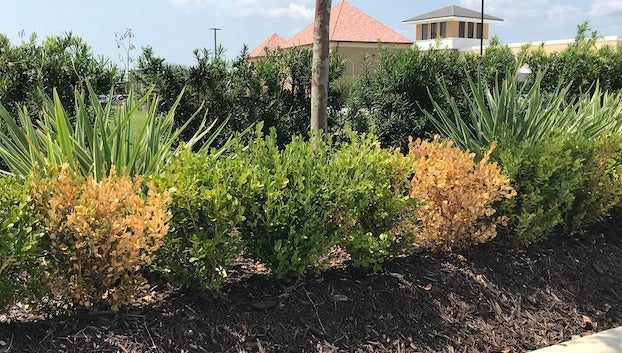Got Boxwoods, Have Problems?
Published 12:09 pm Friday, October 28, 2022

- Raghuwinder Singh LSU AgCenter
|
Getting your Trinity Audio player ready...
|
I’ve been in and out of town the last few weeks with conferences, workshops, and training. It is my chance to learn from other professionals that specialize in disciplines of horticulture, entomology, pathology, and weed control. Horticulture in general covers so many areas that it is really difficult to know it all and this is our chance as industry professionals, academics, and educators to get together and share.
Over the past week, I have learned about several new disease and insect issues to be on the lookout for. Things that could be on the way such as the Asian long-horned beetle or spotted lanternfly or that are already here that I may have been misdiagnosing like boxwood dieback.
The Asian long-horned beetle is a pest that is mainly concentrated in the Northern states. However, a population was confirmed in Charleston County, South Carolina in 2020. It occurs on several hosts from maples to mimosa. The adults bore into the tree’s bark to lay their eggs which hatch into a larvae that can grow to be 2” long. The larvae bores into the phloem of the tree and then makes its way to the xylem to feed until they pupate. They will emerge again as adults to complete the life cycle. The feeding galleries made by the larvae are quite large and destructive because they weaken the tree structurally. The feeding also cuts off the flow of water and nutrition to the leaves.
I think we have all heard of the spotted lanternfly. This pest has been around for a few years now, even garnering the attention of Saturday Night Live a few weeks ago. The update is that is that there are populations in two North Carolina counties now and there have been several isolated adults found across the state. This pest is largely aesthetic but can be a detriment to our vineyards.
Boxwood dieback is yet another issue to be seen on boxwoods. It presents much like phytophthora root rot in that it will show-up as yellow clumps of leaves scattered throughout the foliage. Upon uprooting and inspecting the roots, they look healthy. The next step in diagnosis is to look for stem and/or vascular streaking in the branches that are discolored. There is no control for this disease past removal. When pruning the hedge, disinfect tools between individual plants. Do not use your leaf blower to clean up pruning debris. This is a fungal pathogen that is spread through contact (leaf to leaf) and spores, using the blower and not disinfecting your pruning tools will ensure the spread of the disease to other plants.
In addition to phytophthora root rot, there are several more lookalikes on boxwoods that can cause similar symptoms. Boxwood blight is probably the most know of these. There have been known cases of this pathogen across the state dating back to 2011. Leafspots and lesions can be observed in the lower canopy typically being circular in shape and having a dark border with light brown to purple center. Leaves will begin to yellow or bronze and may have gray to white, sticky fungal spores on the underside of the leaf during warm humid conditions. On the stems, black lesions or streaks will be present. Symptoms are often noticed on the shady side of the plant initially and then defoliation occurs all over the plant. This is a major issue because it affects multiple species of boxwoods.
Volutella blight is another issue that can plague our boxwoods. This is an issue very similar to boxwood blight and can be the initial pathogen or can be secondary to boxwood blight. There will be more leaves left on the plant than with boxwood blight. Checking the underside of the light green to brown leaves will show salmon-colored spores.
Lastly, boxwood leafminers can present foliar spots that resemble those of boxwood dieback and these other lookalikes. Leafminers get in between the layers of leaf tissue to lay their eggs. The eggs hatch and larvae feed on the leaf tissue before pupating and emerging as adults the following spring. Leaves will turn yellow and defoliate having a blistered appearance.
So, with all of this going on, why plant boxwoods? They are typically very easy to manage in a well-drained soil and ideal conditions. However, we often expect our boxwoods to live through much less than ideal conditions. I think many of our issues are result of cultural management mistakes. Knowing the particular culture of a plant can go a long way in helping to keep that plant healthy. To learn more about the plants you have in your landscapes or to research plants prior to planting, visit our Extension Gardener Plant Toolbox at plants.ces.ncsu.edu.
If you are having trouble with growing in your home landscape, call the Extension office at (252)946-0111 or email me at gene_fox@ncsu.edu. If you have a plant that you are unable to identify or would like to know more about the plants in your landscape, let’s talk! Like an old family doctor, I do house calls if we can’t figure out your problem.



